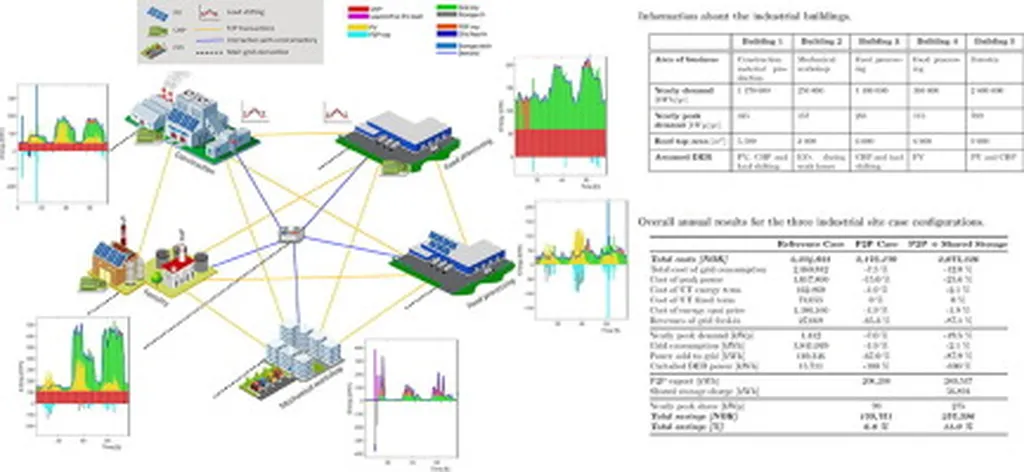In the rapidly evolving energy landscape, the integration of renewable energy sources into power grids presents both opportunities and challenges. A recent study published in *China Electric Power* (originally *Zhongguo dianli*) offers a promising approach to enhancing grid flexibility and optimizing energy trading among microgrids. Led by Xiaowen Huangfu of the State Grid Henan Electric Power Company Economic and Technical Research Institute, the research introduces a decentralized peer-to-peer (P2P) trading strategy that leverages shared energy storage systems (SESS) to mitigate power fluctuations and improve revenue allocation.
The study addresses a critical issue in modern energy systems: the variability of renewable energy sources like wind and solar power. As these sources become more prevalent, their intermittent nature can strain the grid, leading to inefficiencies and potential instability. Huangfu and his team propose a solution that not only stabilizes the grid but also incentivizes the participation of distributed energy resources.
“Our approach focuses on the interactions between active distribution networks and microgrids,” Huangfu explains. “By introducing a shared energy storage system and a P2P energy trading mechanism, we can enhance the overall flexibility of the system and ensure fair revenue allocation among multiple microgrids.”
The research introduces a multi-microgrid power fluctuation mitigation strategy and a P2P flexibility trading strategy based on SESS leasing. This innovative approach allows microgrids to share energy storage resources, reducing the impact of renewable energy fluctuations on the grid. Additionally, the study proposes a revenue allocation mechanism based on asymmetric Nash bargaining, which uses a nonlinear energy mapping function to evaluate each microgrid’s contribution. This ensures that the benefits of cooperation are distributed fairly.
One of the standout features of this research is its use of the alternating direction method of multipliers (ADMM) to solve the proposed model distributively. This method not only enhances computational efficiency but also protects the information security of all stakeholders, a crucial consideration in today’s data-driven world.
The study’s findings were validated through comparative case studies, demonstrating the effectiveness of the proposed strategies. The results suggest that this approach could significantly improve the stability and efficiency of power grids dominated by renewable energy sources.
The implications of this research are far-reaching. As the energy sector continues to transition towards renewable sources, the need for flexible and efficient grid management solutions will only grow. Huangfu’s work provides a robust framework for achieving these goals, offering a blueprint for future developments in the field.
“Our research highlights the importance of collaboration and innovation in addressing the challenges of renewable energy integration,” Huangfu notes. “By leveraging shared resources and advanced trading mechanisms, we can create a more resilient and efficient energy system.”
As the energy sector continues to evolve, the insights from this study could shape the future of grid management and energy trading, paving the way for a more sustainable and flexible energy landscape.

